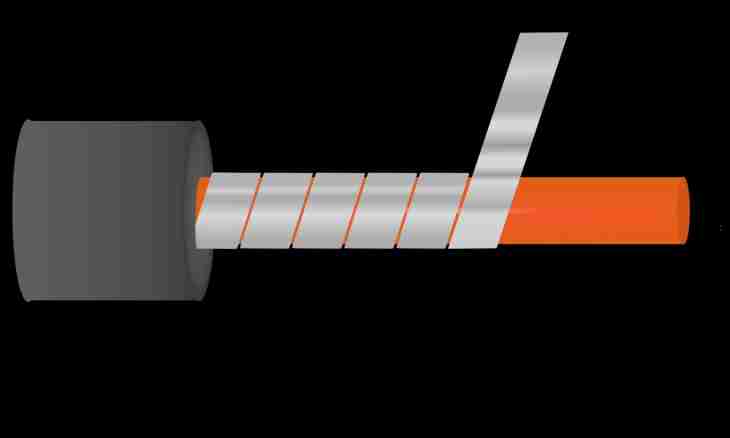If to close an electrical circuit, having created potential difference on its ends, then on it electric current which force can be measured by the Ampermeter will run. But this force will vary if in a chain to replace one conductor with another. It means that not only tension influences the current, but also material of which the conductor is made. This property of the conductor to interfere with passing of electric current and is called resistance.
Each body in relation to electric current is characterized by the resistance. If to remember the electronic theory, then according to it, all substances consist of atoms and molecules. These atoms and molecules in different substances have different structure. And they meet on the way of the movement of free electrons in the conductor when on an electrical circuit there is current. That is, when the free electron faces an ion of a crystal lattice of material of the conductor, he inevitably loses a part of the kinetic energy and tests kind of resistance to the movement.
The more resistance of the conductor, the it passes electric current worse. Electrical resistance is designated by Latin letter R, and 1 Ohm is taken for unit of measure.
The return characteristic of resistance of substance is its conductivity. The electric conductivity of material is higher, the better it carries current. Insulators differ from conductors on conductivity in the huge number of times measured by unit with twenty two zero!
Specific resistance. Definition and calculation
So, electrical resistance depends on material of which the conductor is made. But there are two more important parameters - it is length of the conductor and the area of its cross section. It is obvious that the conductor is longer, the longer ions of its substance will hinder the movement of free electrons. And here better to understand why resistance depends on cross-sectional area, it is necessary to draw an analogy to water. Present two identical vessels connected in one case by a thin tube, and in another – thick. On thin or on a thick tube water will quicker be poured from one vessel in another? It is clear, that on thick. Specific resistance is the resistance of the conductor, 1 meter long and of 1 mm2. Silver and copper have the smallest specific resistance. So that to calculate the electrical resistance of the conductor, it is necessary to use a formula: R = pl/S where p is specific resistance, l is length of the conductor, S is the cross-sectional area of the conductor.
Interesting facts
At temperature increase of the metal conductor, its resistance increases. It is possible to explain this phenomenon with the fact that by transfer of thermal energy to a body the intensity of the movement of atoms of its substance increases, and it more interferes with free current of electrons. With decrease in temperature in metals the best conditions for carrying out electric current are created. There is even such concept as superconductivity, that is such condition of the metal conductor when its resistance is equal to zero. At the same time metal atoms practically freeze, without obstructing the traffic of free electrons at all. There is it at a temperature - 273 wasps.
